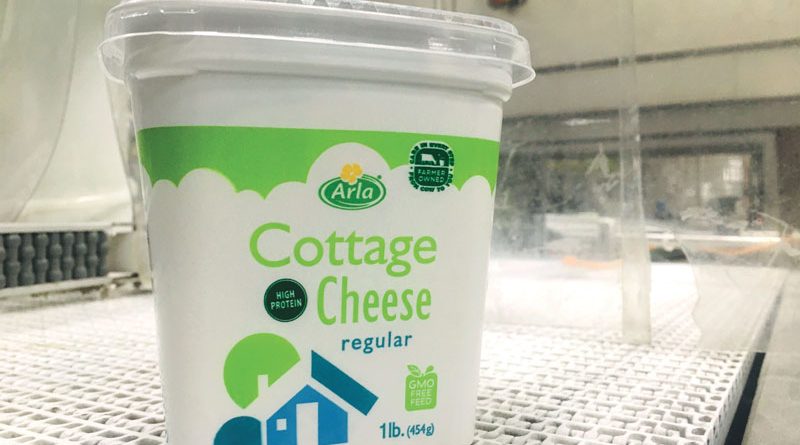Transparency over Energy Consumption is Ensured by Flow Sensors
Dairy cooperative Arla Foods has, for the first time, created transparency over the energy consumed in cottage cheese production. Baumer FlexFlow® sensor is able to measure the temperature of the medium as well as the flow rate.
Dairy cooperative Arla Foods has, for the first time, created transparency over the energy consumed in cottage cheese production at its Falkenberg location. This involves the use of the Baumer Flex-Flow® sensor, which is able to measure the temperature of the medium as well as the flow rate.
This cost reductions this could achieve in the future quickly made this a worthwhile investment.
High production volumes call for a resource-efficient manufacturing process
At its Falkenberg location, dairy cooperative Arla Foods produces 20,000 tonnes of cottage cheese every year equivalent to 76.9 tons per day. An impressive quantity indeed. Arla Foods satisfies almost the entire cottage cheese demand on the Swedish market and also exports to Finland, Denmark and Greece. Production volumes of this magnitude call for a resource-efficient manufacturing process, and Arla Foods is a forerunner when it comes to sustainability: the dairy cooperative intends to bemaking its products completely CO2-neutral by 2050. A key element of this journey: energy efficiency.
In recent years, the cooperative has been placing an increasingly strong focus on monitoring the energy consumption its plants, but had troubles in identifying where exactly the energy was being used. FlexFlow®, the calorimetric flow sensor from the Swisssensor experts at Baumer achieved the breakthrough: Arla installed these sensors at the neuralgic points in the cooling and heating system and used the measurement results to obtain, for the first time, a clear image of the energy consumption. So the dairy producer can now derive concrete measures for reducing energy consumption.
Clear solutions based on long-term collaboration
Cooling and heating – these were the tricky points in the energy consumption for Arla Foods in Falkenberg. Because of its commitment to sustainability, the food manufacturer had already made a great effort to reduce the energy balance when the plant was designed. It uses to the greatest possible extent, for example, the low external temperatures of the Swedish climate to achieve a cooling temperature of 0.5 degrees Celsius for the cooling circuit, which cools the produced cheese from 60 to 30 degrees Celsius. Yet energy losses that Arla had been unable to localize for some time occurred here as well. Baumer has been collaborating with Arla Foods since the 1990’s. The cooperation has seen the development of a new process connection for milk production called Baumer Hygienic Connection, and this has effectively optimized the cleaning times. The temperature sensors from the CombiSeries product range were also created under the close collaboration between Arla and the Baumer Development Center in Aarhus in Denmark. To solve the problem of monitoring energy consumption, the choice fell to the FlexFlow® sensor because it could easily be integrated into the existing plant and is able to measure both flow and temperature.
Simple installation, free from complex wiring
The simple installation of the FlexFlow® sensor is down to the symmetrical and centered design with one sensor element ahead of the sensor tip, which allows the sensor to be optimally installed in the process regardless of installation position and orientation.
The flow sensor has a robust stainless steel housing that accommodates all the electronics, so there’s no need for complex wiring or control cabinet installation. The FlexFlow® also meets the requirements for protection class IP 68 (Baumer proTect+), making this sensor, together with the materials used, the perfect solution for hygienic applications. One exceptional feature is its maximum temperature range to 150 degrees Celsius, which also qualifies it for Sterilization-In-Process (SIP) tasks. Arla has already installed around 15 of these flow sensors in the cooling circuit and heating system. The plan is now to also integrate these sensors into the CIP return line to monitor and optimize the energy consumption there as well.

